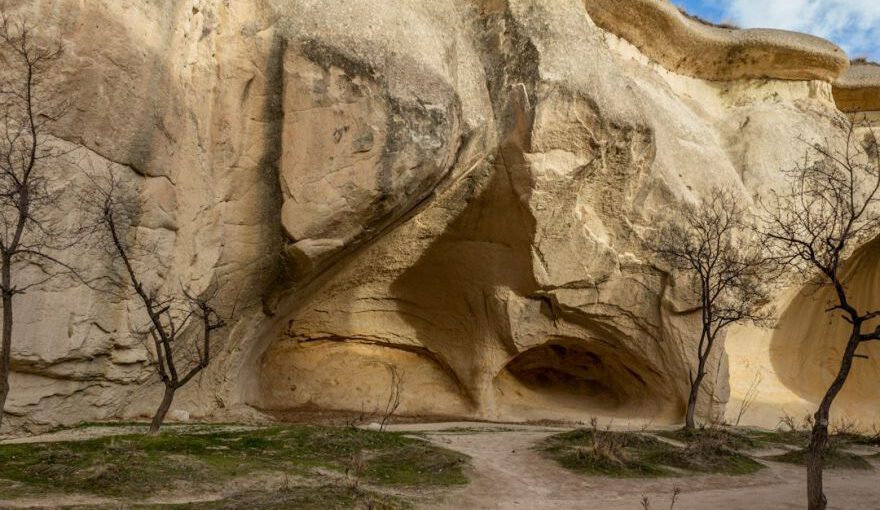Nestled in the heart of modern-day Turkey, Cappadocia is a region rich in history and cultural significance. While often known for its otherworldly landscapes and unique rock formations, Cappadocia also played a pivotal role in the development and spread of Christianity. This article provides a historical overview of the influence of Christianity in Cappadocia, exploring the early beginnings, the rise of prominent religious figures, and the lasting impact on the region.
Early Beginnings: The Spread of Christianity in Cappadocia
Christianity first arrived in Cappadocia during the Roman Empire’s rule, gaining significant popularity among the local population. The region’s strategic location, situated between the East and the West, facilitated the exchange of ideas and beliefs, fostering an environment ripe for the growth of Christianity.
Prominent Figures: The Influence of Cappadocian Fathers
One cannot discuss the influence of Christianity in Cappadocia without mentioning the remarkable contributions of the Cappadocian Fathers. This group of influential theologians and bishops emerged in the 4th century and played a pivotal role in shaping early Christian thought.
St. Basil the Great, one of the most notable Cappadocian Fathers, was born in Cappadocia and later became the Bishop of Caesarea. He was known for his profound theological insights and his tireless efforts in promoting social justice. St. Basil’s teachings on compassion and caring for the poor continue to inspire Christians worldwide.
Another prominent figure, St. Gregory of Nyssa, was the younger brother of St. Basil the Great. He too made significant contributions to Christian theology, particularly in the areas of mystical contemplation and the concept of the soul. St. Gregory’s writings continue to be studied and revered by theologians and scholars.
The Rise of Monasticism: The Influence of Cappadocian Monks
Cappadocia served as a cradle for monasticism, which played a crucial role in the spread of Christianity. The region’s unique geological formations, such as the fairy chimneys and cave dwellings, provided ideal settings for monks seeking solitude and spiritual reflection.
Monastic communities sprouted across Cappadocia, with monks dedicating themselves to lives of prayer, contemplation, and service. These communities not only served as centers of spiritual growth but also as educational institutions, preserving and transmitting knowledge to future generations.
Iconography: The Silent Sermons of Cappadocia
The influence of Christianity in Cappadocia extends beyond theological thought and monasticism. The region is also renowned for its rich tradition of iconography, or the art of religious images. Cappadocian iconography has a distinct style characterized by its intricate details, vibrant colors, and spiritual symbolism.
Icons served as visual representations of Christian teachings, making the faith accessible to illiterate individuals. Through their silent sermons, icons conveyed profound theological truths and inspired deep devotion among believers. Today, Cappadocian icons continue to be cherished and revered, reflecting the enduring influence of Christianity in the region.
The Legacy of Christianity in Cappadocia
The influence of Christianity in Cappadocia can still be felt today, centuries after its early beginnings. The region’s rich Christian heritage is evident in its numerous churches, chapels, and monasteries that dot the landscape. These architectural marvels showcase intricate frescoes, depicting biblical scenes and religious figures, providing a glimpse into the region’s spiritual past.
Furthermore, Cappadocia has become a popular pilgrimage site for Christians from around the world. The opportunity to explore ancient cave churches, participate in religious ceremonies, and connect with the faith’s roots draws thousands of visitors each year. This influx of pilgrims not only supports the local economy but also fosters a sense of unity among believers, transcending cultural and linguistic barriers.
In conclusion, the influence of Christianity in Cappadocia is profound and enduring. From its early beginnings to the rise of influential figures and the establishment of monastic communities, Christianity has left an indelible mark on the region. The legacy of Christianity is evident in the architectural wonders, vibrant iconography, and the continuous stream of pilgrims seeking spiritual connection. Cappadocia stands as a testament to the transformative power of faith and serves as a living testament to the enduring influence of Christianity.





